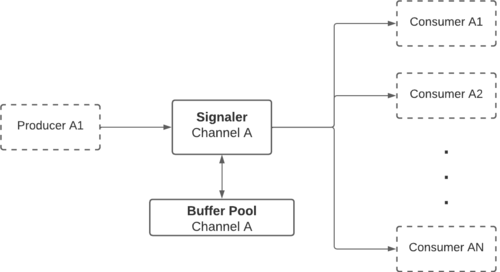Difference between revisions of "Template:BIPS/Main contents"
(→What is Buffer Interprocess Sharing?) |
(→Supported Formats) |
||
| Line 46: | Line 46: | ||
RidgeRun also makes a binary-only evaluation version available. Please refer to [[GstKinesisWebRTC/Contact_Us| Contact Us]] to get an evaluation binary. | RidgeRun also makes a binary-only evaluation version available. Please refer to [[GstKinesisWebRTC/Contact_Us| Contact Us]] to get an evaluation binary. | ||
| − | |||
| − | |||
| − | |||
| − | |||
| − | |||
| − | |||
| − | |||
| − | |||
| − | |||
| − | |||
| − | |||
| − | |||
| − | |||
| − | |||
| − | |||
| − | |||
| − | |||
| − | |||
| − | |||
| − | |||
| − | |||
| − | |||
| − | |||
| − | |||
| − | |||
| − | |||
| − | |||
| − | |||
| − | |||
| − | |||
| − | |||
| − | |||
| − | |||
| − | |||
| − | |||
| − | |||
| − | |||
| − | |||
| − | |||
| − | |||
| − | |||
| − | |||
| − | |||
| − | |||
| − | |||
| − | |||
| − | |||
| − | |||
| − | |||
| − | |||
| − | |||
== Tested Platforms == | == Tested Platforms == | ||
Revision as of 11:03, 14 December 2022
|
Buffer Interprocess Sharing! Buffer Interprocess Sharing. |
| ||||||||||||||||||||||||||||||||||||||||||||||||||||||||||||||||||||
|
Buffer Interprocess Sharing | |||||||||||||||||||||||||||||||||||||||||||||||||||||||||||||||||||||
|
This wiki is a user guide for our Buffer Interprocess Sharing project. ContentsWhat is Buffer Interprocess Sharing?Buffer Interprocess Sharing, or BIPS, is a variant of a common IPC that allows communication between processes. In this case, BIPS allows sharing data buffers between two or more processes with zero copy. They can be classified as Producers or Consumers according to their role in the system. The producer is responsible for generating and filling in the information on the buffers that the Consumers will read. The synchronization between these entities is handled by the Signaler, which ensures that all operations are concurrent-safe. This means that Consumers can only read buffers that are fully written by Producers and that Producers can only write buffers already read by Producers. These buffers are created and managed by a shared structure known as the Buffer Pool, which has a fixed capacity. The Signaler handles the synchronization between the BP and the Consumers/Producers.
Supported BackendsBIPS is used to communicate processes that need to share information, which helps to optimize memory usage and applications performances. The backend is responsible for allocating the pool of buffers with a fixed size, which will be known before processing. This is to avoid expensive allocation and free operations at runtime and to avoid memory fragmentation. Shared Memory is a standard way to communicate data between processes (IPC - Inter Process Communication, see the diagram below). In this methodology, data is allocated in a commonplace. So, when any process updates some value in the shared zone, the other processes can see the updated value immediately. BIPS shared memory implementation is based on the POSIX Shared Memory (shm) to offer great compatibility.
Error creating thumbnail: Unable to save thumbnail to destination
Tested Platforms
| |||||||||||||||||||||||||||||||||||||||||||||||||||||||||||||||||||||
|
RidgeRun Support | |||||||||||||||||||||||||||||||||||||||||||||||||||||||||||||||||||||
|
RidgeRun provides support for embedded Linux development for NVIDIA, Xilinx, Freescale/NXP, and Texas Instruments platforms, specializing in multimedia applications. This page contains detailed guides and information on how to get started with Buffer Interprocess Sharing and start using its full capabilities. To get up-to-speed with your Buffer Interprocess Sharing, start by clicking below:
Error creating thumbnail: Unable to save thumbnail to destination
Error creating thumbnail: Unable to save thumbnail to destination
|
|||||||||||||||||||||||||||||||||||||||||||||||||||||||||||||||||||||




